Multi-cloud environments have quickly become preferred digital solutions for the majority of businesses. Research shows that more than 85 percent of companies now report operating in a multi-cloud environment, with 76 percent saying that they run more than one cloud (the numbers they report vary from two to 15).
Multi-cloud environments provide highly flexible yet powerful solutions for companies’ digital needs – especially when it comes to automation, AI introduction, and edge computing. At the same time, there are challenges associated with multi-cloud environments that need to be addressed – such as:
- When an organisation introduces multi-cloud environments along with more traditional models, coordinating and controlling both may become challenging.
- Strategically, CIOs may be challenged when trying to both define the right objectives for adopting the multi-cloud solutions – and assess whether their chosen cloud providers are the right ones to meet these objectives.
- Multi-cloud environments are complex and can attract higher risks of cyber attacks, as cybercriminals might potentially exploit “gaps” that may be present in their defences.
The need to address the above challenges has brought about a renewed interest in the concept of SIAM – Service Integration and Management. Simply defined, SIAM is a methodology dealing with integrating and managing services of different providers within one environment.
As Shane Johnson, Director at ITSM Hub, pointed out in an interview with IDG Communications, SIAM is essentially a new label for a practice that has been around for a while.
“The practices that frame the SIAM approach have been around since the early 2000s, but it used to be called managed or multiple vendor management, complex multi service provision management, or similar terms. And indeed, back in 2014, we were doing this kind of work, but we did not really give it the label of ‘SIAM’,” Johnson said.
“But it’s really a methodology that allows organisations to address the complexity of managing multiple service providers for their IT services. And it’s very much something that’s become front and centre in the last year or so.”
Johnson also pointed out that the typical challenges addressed by SIAM have now been present for a while, especially in the operating environments of large companies that tend to have complex and more diverse service arrangements.
Such organisations, however, normally also have the capacity to architect and successfully incorporate new service provision models – such as multi-cloud environments – into their operations. So, it’s really medium-sized and smaller enterprises that are now most at risk of being overwhelmed by the challenges that adopting the multi-cloud sourcing solutions presents – as many of them face challenges of that nature for the first time.
What issues can SIAM resolve?
There are a few indicators that signal the need for SIAM in a multi-cloud digital environment. These include:
- Lack of certainty about duties of individual cloud vendors.
- Poor coordination between individual cloud vendors.
- Excessive complexity, costs, and labour intensity are attached to the reporting and quality assurance processes.
- Rapid rise in demand for diverse IT solutions and clouds.
- Stakeholders – both external and internal – raising issues affecting the performance of the environment.
- Cyber security issues or data breaches resulting from operating in the multi-cloud environment.
What is the most effective way to implement SIAM?
While implementing SIAM, it is important to keep in mind not just its positives, but also its potential to negatively impact an organisation (which is true for any IT services model). If SIAM is poorly managed, it can end up being not cost-efficient, and result in the decline of the overall service quality. The SIAM model can also become too restrictive and not accommodating for future growth and the addition of more clouds as businesses grow. Some of the best practices that can be used to alleviate these risks are:
- Formulating a clear, coherent SIAM strategy. The reason why organisations turn to SIAM is that they have found themselves in a difficult and challenging situation due to poorly planned switching to cloud services. The last thing they want is to further complicate the situation by adding SIAM without clearly defined strategy and guidelines.
- When considering your service contracts – future as well as current ones – think about the big picture. A Service Integrator organisation that can take over coordinating service provisions on your behalf is also an option to consider.
- Evaluate if your service providers are suitable candidates for a SIAM arrangement and whether they should provide temporary solutions – or form a part of a greater outsourcing strategy. You should always strive to consolidate whenever and wherever practical so that the complexity of your service integration model can be reduced.
SIAM, when rolled out properly, brings about better services to internal and external users, improved cost efficiency, reporting, and accountability associated with running multi-cloud environments. It also stimulates innovation, as organisations are able to access a wider range of services and cloud providers while being backed by a sound digital transformation strategy.
However, it is important to realise that SIAM by itself cannot be the solution to an organisation’s digital transformation – but can greatly facilitate the process. While establishing the right partnerships is crucial, it is even more important to set clear strategic directions prior to the SIAM implementation in your organisation.
Contact ITSM Hub to obtain more information on SIAM, or to further explore this opportunity.
























